Hi-van is supported by its audience. When you purchase using our links, we may earn an affiliate commission (no added cost to you). Learn more
When planning your next camping trip, you may be eager to enjoy the age-old tradition of gathering around a campfire, roasting marshmallows, and sharing stories with friends and family. However, it’s essential to be aware that not all campgrounds permit campfires, and understanding the rules and regulations surrounding campfires is crucial for ensuring a safe and enjoyable experience.
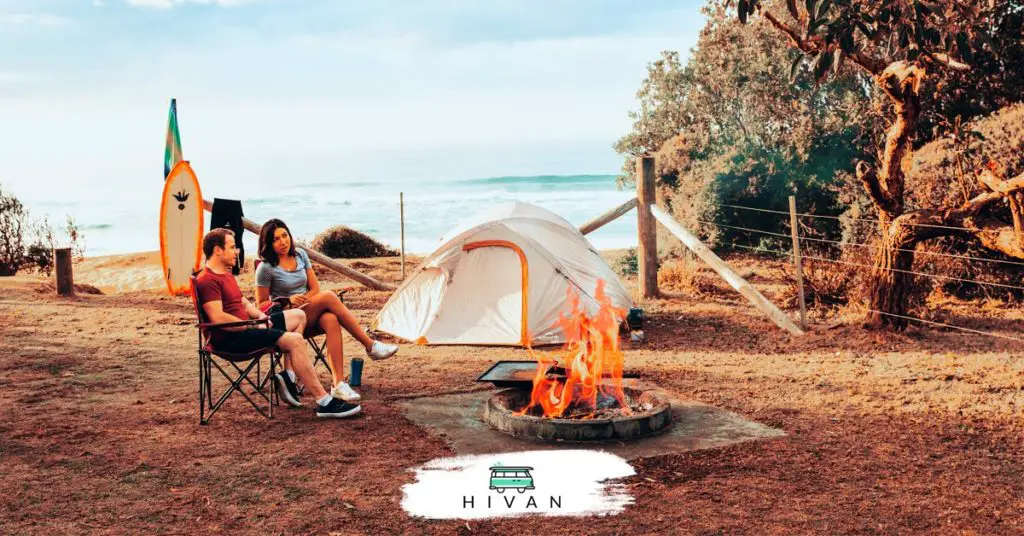
The decision to permit campfires at a campground depends on various factors such as location, fire safety regulations, and environmental conditions.
Some camping sites, due to their specific locations or regional laws, may prohibit any open fires. Additionally, certain times of the year may pose a higher risk for wildfires, leading to temporary bans or restrictions on campfires.
Before you pack your camping gear and strike off into the wilderness, always research the campground’s rules and guidelines regarding campfires. Make sure you’re prepared with alternative cooking and entertainment methods, just in case fires are not allowed during your stay.
Campfire Regulations in Campgrounds
National and State Parks
When camping in national and state parks, it’s essential to be aware of the specific campfire regulations and restrictions they have in place. These parks often have different rules concerning campfires, ranging from size to the type of fire permitted. In some cases, parks might have fire restrictions due to environmental factors such as wind or dry debris that could spread wildfires. Always check the park’s regulations before making a fire.
To ensure you abide by the rules, consider the following guidelines in national and state parks:
- Use existing fire circles or pits when available.
- Avoid building fires in dry or windy conditions, and always adhere to the park’s fire restrictions.
- Ensure your campfire is at least 15 feet away from tent walls, shrubs, or other flammable materials.
- Obtain campfire permits if required by the park’s regulations.
Source: Recreation.gov / U.S. National Park Service
Private Campgrounds
When camping in private campgrounds, the campfire regulations might differ from those in national or state parks. It’s crucial to consult the campground’s specific rules regarding fires and safety measures to prevent fire outbreaks.
Some common campfire regulations in private campgrounds include:
- Only use designated fire pits or fire rings.
- Keep campfires small and manageable.
- Extinguish your campfire completely before leaving it unattended.
Remember, not every campground allows campfires, so always check with the campground staff or their website to ensure you’re in compliance with their rules and regulations.
In conclusion, campfire regulations can vary significantly between parks and campgrounds. Always be aware of and adhere to the specific rules and guidelines for the area you’re camping in to ensure a safe and enjoyable experience for you and those around you.
Source: OutdoorSpree
Why Do Some Campgrounds Not Allow Campfires?
Some campgrounds don’t allow campfires because of potential fire hazards, such as dry wind and lots of fallen debris. Other campgrounds might not let people light campfires due to lack of fire protection or hosts (free campsites don’t always have a host on-site) or because they’re located in a nature preserve.
Let’s cover a list of five reasons why some campgrounds don’t want you to light fires:
- It might be fire season where you’re camping, so the campground doesn’t want to be responsible for wildfires. Fire season varies depending on your location, but it always includes high winds and dry debris. These conditions (among others) create a perfect environment for sparks and ashes to jump and burn nearby debris.
- Dry fires are incredibly common, even during cold months of the year. It doesn’t have to be fire season for a fire to break out. If there’s too much dead flora nearby, there’s a high chance some campgrounds will limit or prohibit campfires. Some of them are required to do so by the owners, while others follow state laws.
- State mandates occasionally limit fires in national parks and forests. According to Sac Bee, many states with harsh fires (Colorado, California, Oregon, etc.) can propose limitations that don’t allow any campgrounds to have campfires. This rule is often out of the owner’s hands, so there’s nothing they can do.
- If there’s no host at the campground, there’s nobody to ensure you’re following the campfire rules. This issue is expected when you’re staying at free campsites since they don’t have the budget to have hosts on the site every day of the week. Call ahead of time to find out when a host will be present.
- Another common issue is when a campground simply doesn’t want to be responsible for campfires. While it’s never a good explanation for campers to hear, there’s always the chance that a campground owner or host doesn’t want to deal with campfires and the issues they could bring.
As you can see, there’s a host of reasons campgrounds don’t always allow campfires. The good news is that a lot of them do since they know campfires are an essential part of an outdoor experience. A little bit of online or over-the-phone research can go a long way to help you know if you should bring a lighter and firewood.
Campfire Safety Guidelines
Choosing the Right Spot for Your Campfire
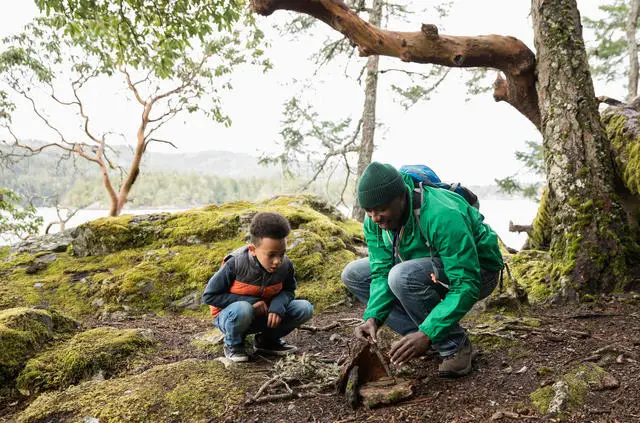
When setting up your campfire, it’s essential to choose an appropriate location. Make sure you’re at least 15 feet away from tent walls, trees, shrubs, and other flammable materials to reduce the risk of fires spreading.
Seek out existing fire circles or pits provided by the campground, as these often help contain the fire and minimize its impact on the environment. If there are no designated areas, pick a spot clear of dry leaves, grass, and branches. Avoid building a fire in windy conditions to prevent sparks from flying and potentially starting wildfires.
Building and Maintaining Your Campfire
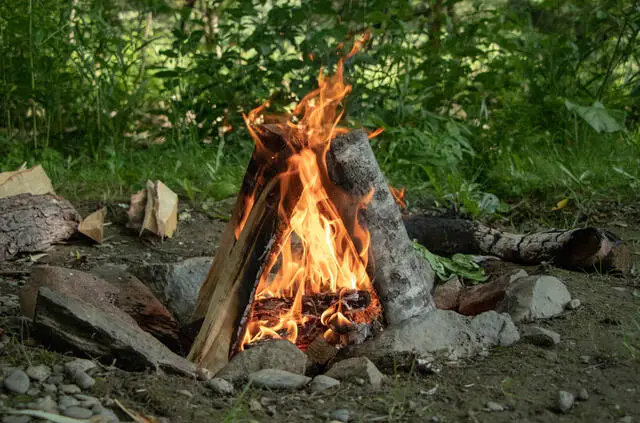
Once you’ve selected a spot, gather all necessary materials: firewood, kindling, firestarter, matches, or a lighter. Keep wood and other flammable materials away from the fire while you build it. Start with a small teepee of firewood surrounded by a circle of fire-resistant rocks or use the metal fire ring provided by the campground. Add kindling and firestarter to the center of the teepee, and then light the fire. Slowly add more firewood, allowing for air circulation.
Since unattended fires can cause accidents or turn into out-of-control wildfires, never leave your campfire unattended. Maintain a moderate fire size for cooking and warmth while avoiding large, uncontrollable flames. Be prepared to handle emergencies with a bucket of water, a fire extinguisher, or a shovel nearby to smother flames if needed.
Extinguishing Your Campfire Properly

When it’s time to extinguish your campfire, it’s crucial to do so safely and responsibly. Allow wood to burn until only ashes remain; this can reduce the risk of spreading wildfires and promote a cleaner forest environment.
Begin by sprinkling water on the fire until the ashes are soaked. Stir the ashes with a shovel to ensure the water reaches the remaining embers. Continue adding water and stirring until there is no more smoke or steam. Touch the ashes with the back of your hand to verify that the fire is completely out before leaving.
By following these campfire safety guidelines, you’ll help protect yourself, others nearby, and the cherished natural surroundings that make camping such a special experience.
Always check for fire restrictions in the area before starting your campfire, and respect nature by adhering to responsible practices.
Leave No Trace Principles and Campfires
Minimizing Campfire Impact on the Environment
When camping, it’s essential to follow the Leave No Trace Principles to minimize the environmental impact. When it comes to campfires, you should first determine whether they are allowed at your chosen campground.
If they are, consider using a portable stove instead of a campfire, as it significantly reduces the impact on the environment. The Leave No Trace Center suggests using camp stoves, which have fewer impacts than campfires.
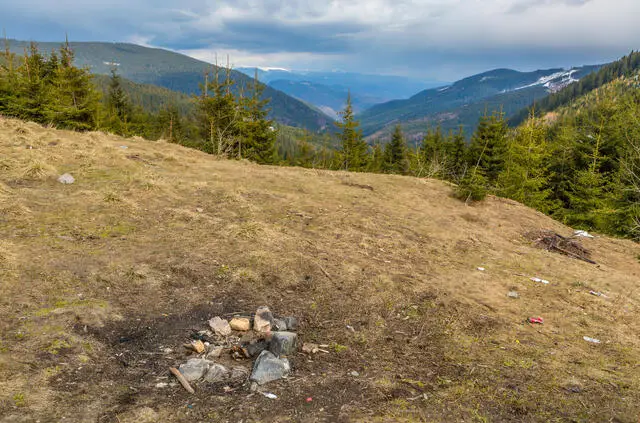
However, if you still decide to have a campfire, it’s important to select a suitable location. Choose a spot that’s at a safe distance from your campsite, as well as from trees, bushes, and other flammable materials. Avoid building a campfire when it’s windy, as wind can quickly spread embers and cause a wildfire.
Stick to using small, dead wood that has already fallen down for your firewood, as this reduces the impact on living vegetation. Keep the fire small and manageable, and never leave it unattended.
Cleaning Up Your Campsite
Once you’ve enjoyed your campfire, it’s crucial to clean up your campsite properly.
After your fire is out, collect all the ashes and scatter them in a wide area to help minimize the impact on the environment. If you’ve used a fire ring, dismantle it and scatter the rocks as well.
Follow the Leave No Trace Principles by inspecting your campsite for trash, leftover food, and litter. Make sure to pack out all the waste and dispose of it appropriately, leaving the environment clean and pristine for future campers.
By adhering to these guidelines, you can enjoy your camping experience while minimizing your impact on the environment, ensuring that nature remains unspoiled for future generations.
Adapting to Campfire Restrictions and Bans
Alternative Cooking Methods
During campfire restrictions and bans, you are still able to enjoy a hot meal by utilizing alternative cooking methods. Remember, these limitations are in place to prevent wildfires and ensure everyone’s safety. Here are a few practical cooking options for your next camping trip:
- Propane stoves: Portable propane stoves can be an excellent choice for cooking while camping, as they are unaffected by most fire bans. Just make sure to check local restrictions before your trip.
- Solar ovens: Harness the power of the sun to cook your meals with a solar oven. This eco-friendly option has the added advantage of being smoke-free, perfect for avoiding fire hazards.
Keep in mind that open fires of any kind, even for cooking purposes, might not be allowed in some areas during fire restrictions.
Fireless Entertainment Options
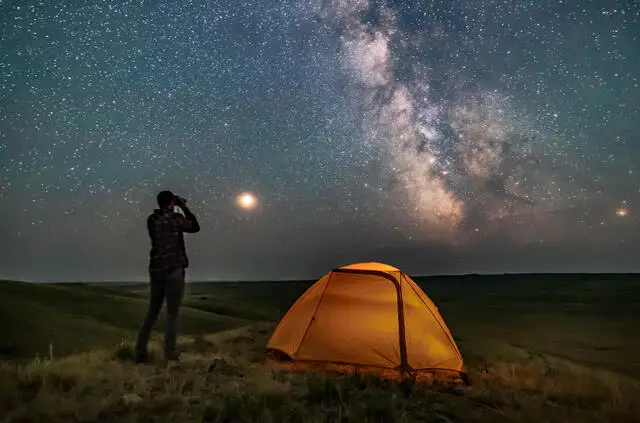
Just because campfires are off-limits doesn’t mean you can’t enjoy a memorable camping trip. There are plenty of alternative entertainment options that you can explore:
- Stargazing: Getting away from the city means you will have a clear and unobstructed view of the night sky. Make the most of it by bringing telescopes, binoculars, or constellation guidebooks.
- Night hikes: Take advantage of the cool evening temperatures and embark on a guided night hike. Always use caution, bring flashlights, and wear appropriate gear for the trails.
- Board games: Bring along your favorite board games for some friendly competition in the great outdoors.
- Storytelling: Gather your fellow campers and take turns sharing intriguing stories, or read aloud from a book while enjoying the tranquil atmosphere of your campsite.
Remember, adapting to restrictions and fire bans can still allow you to have a fun and rewarding camping experience. Remain informed about the rules at your campground, and always prioritize the safety of yourself and others.
Additional Campfire Factors to Consider
Considering Other Campers and Wildlife
When planning your campfire, it’s important to consider the impact it may have on other campers and wildlife. You should always respect the campsite guidelines, as not every campground allows campfires, and some may impose restrictions due to environmental concerns or risks of wildfires.
If you’re unsure about campfire rules at your chosen campground, it’s best to check the website, make a phone call, or visit the visitor center to confirm.
Keep the noise levels down and avoid disturbing neighboring campers. Making excessive noise can be stressful for wildlife in the area, too. Be mindful of your pets and ensure they are adequately secured and not disrupting others or local fauna.
Remember, it’s essential to keep your campfire at a safe distance from tents, RVs, motorcycles, and any flammable materials.
Understanding Local Campfire Fines and Penalties
If you fail to follow campfire rules and regulations, you may be subject to fines and penalties. Each campground may have specific limitations and regulations, so it’s crucial to stay updated on the rules. You can usually find this information on the campground’s website or by contacting the hosts or visitor center.
In most cases, fines are imposed for not adhering to fire safety guidelines, such as:
- Failing to use designated fire rings or pits
- Leaving campfires unattended
- Starting fires in unauthorized locations
- Burning prohibited materials
Staying Informed on Campfire Regulations
Before setting up a campfire, always verify the current campfire regulations by visiting your chosen campground’s website or contacting their office directly. This information will help you to comply with campfire rules and avoid disruptions or fines. Additionally, staying informed about any recent changes in regulations ensures that you stay updated and respect the environment and other visitors around you.
It’s also crucial to be aware of local fire hazards and risks, which can vary depending on the season and location. Make sure to stay updated on any fire ban notices or restrictions imposed by the local authorities and campground management.
By considering the needs of other campers, understanding local fines and penalties, and staying informed about campfire regulations, you can ensure a safe and enjoyable camping experience for yourself and those around you.
Conclusion
Now that you know when and where you can set up a campfire, you can choose your favorite campsites for a fun trip. Most campgrounds allow fires throughout the year, some of which require permits or lay out specific rules to follow. As long as you stay within their standards, you don’t have to worry about legal issues or campground fines.

